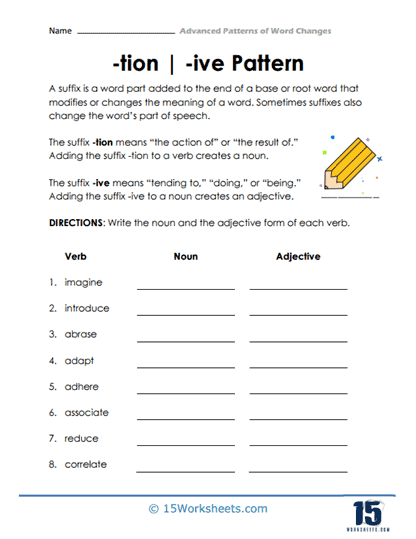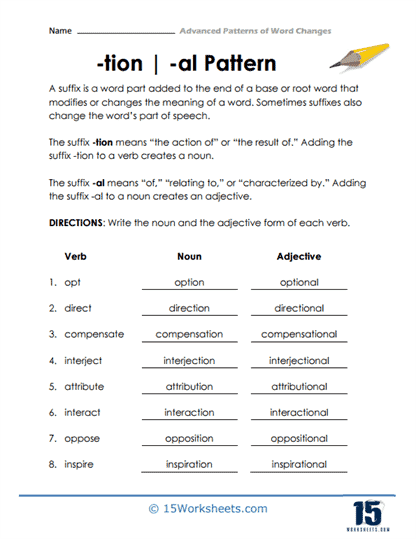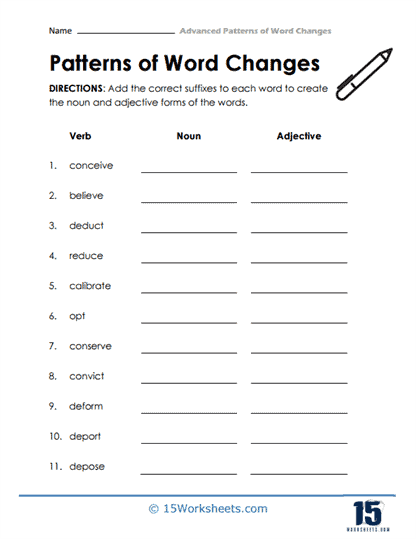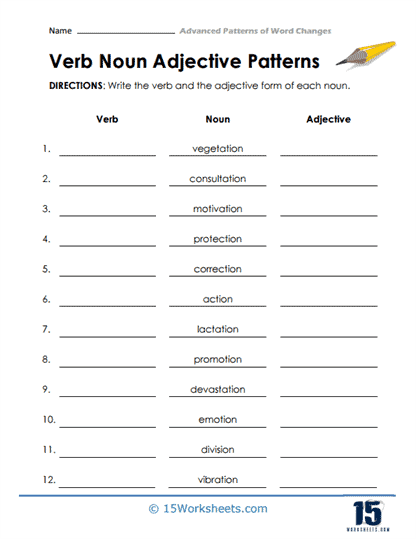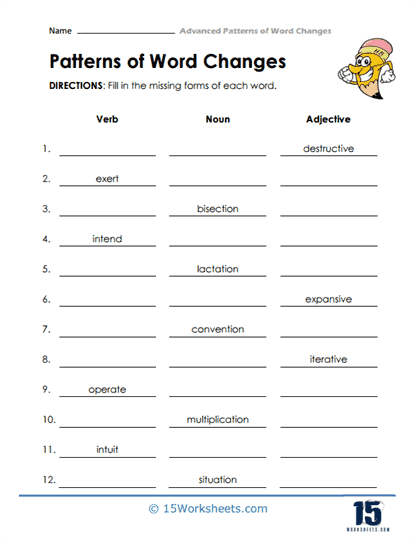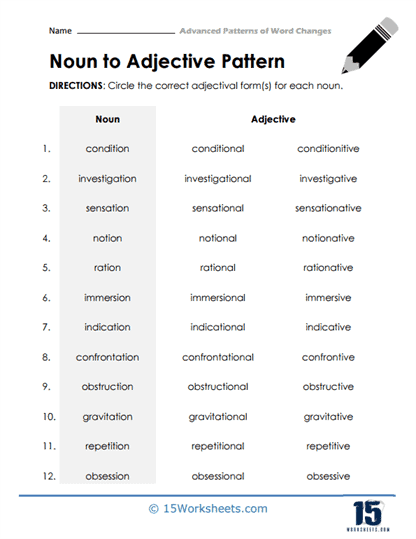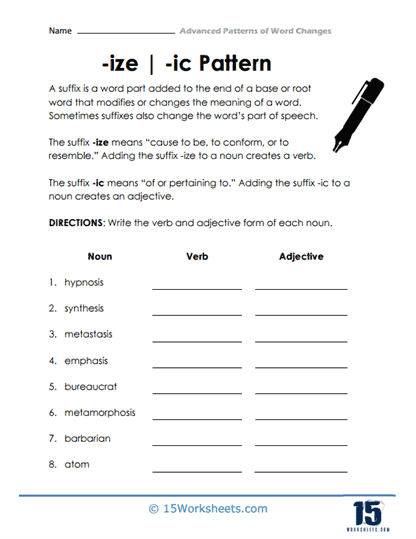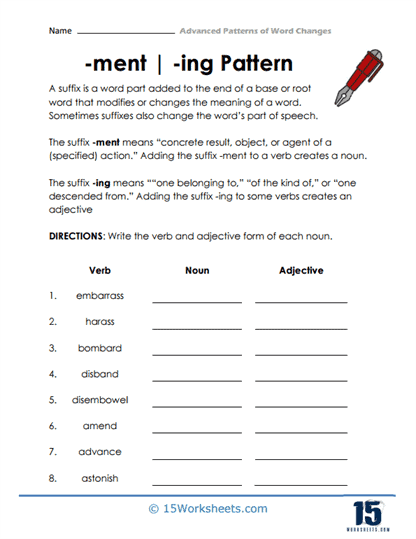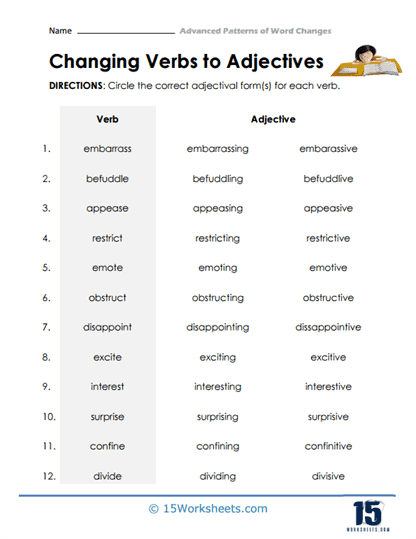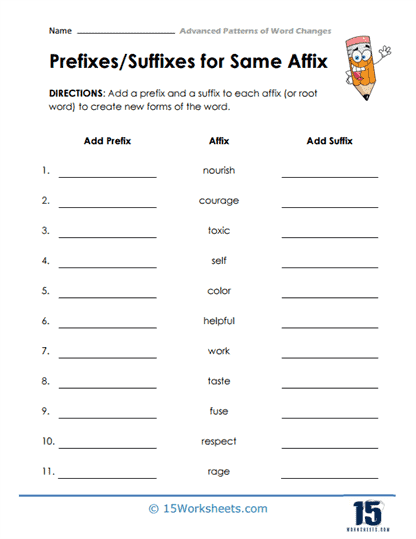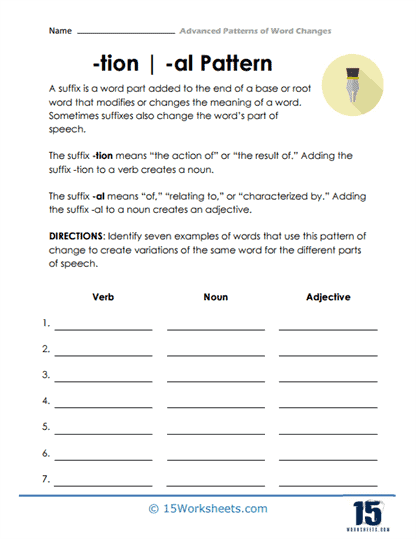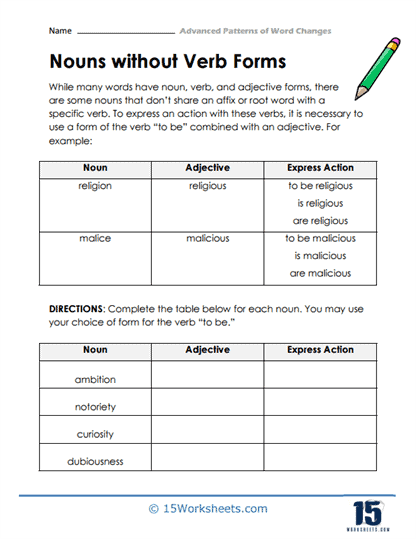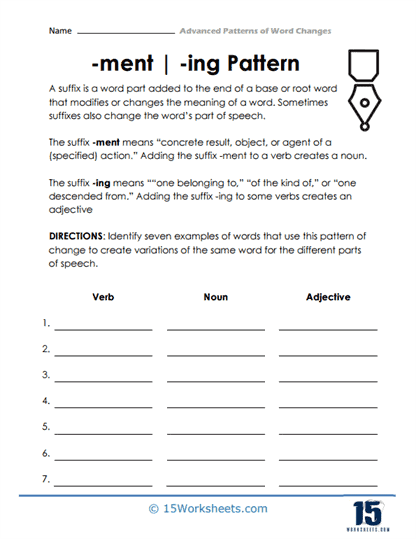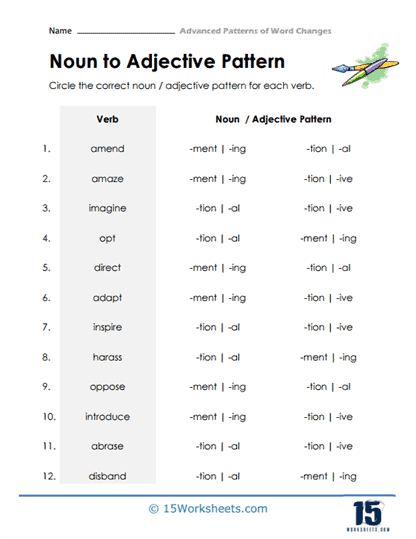Patterns of Word Changes Worksheets
All About These 15 Worksheets
This series of 15 worksheets on patterns of word changes offers an engaging and interactive learning experience for students to explore the various patterns and transformations that words undergo. Through a variety of activities and exercises, students will enhance their vocabulary, improve their understanding of word formation, and develop critical thinking skills. These worksheets promote linguistic analysis, creative thinking, and a deeper appreciation of the evolution of language. By completing them, students will:
- Identify the verb, noun, and adjective forms of various words, following different patterns;
- Be familiar with the various patterns of word changes like -tion and -ive, -tion and -al, -ize and -ic, and -ment and -ing.
- And determine the correct pattern for different words.
This series of worksheets on patterns of word changes encourages students to delve into the dynamic nature of language and explore the various patterns and transformations that words undergo. By promoting vocabulary expansion, critical thinking, and linguistic analysis, these worksheets enhance students’ language skills, word recognition abilities, and overall appreciation for the versatility of language. Students develop a deeper understanding of word formation and gain confidence in deciphering word meanings and structures.
How Do Changes In Pattern Of Words Indicate Different Meanings?
In the English Language, there are different parts of speech like nouns, adjectives, adverbs, or verbs. These are the roles played by the root words in a sentence. We use suffixes to the root to change a root word into multiple forms of similar meaning. Here we will learn how changes in the pattern of words indicate different meanings.
What Are Suffixes?
A suffix is a new ending attached to the root word, which carries the actual meaning—adding suffixes alternate the purpose of the root.
Some examples of suffixes convert roots into nouns, verbs, adjectives, etc.:
How to Change Roots into Nouns
1. -acy/-cy
It turns root into any state, or a quality form, e.g., privacy, urgency, delicacy
2. -al
It shows a process of doing or acting, e.g., betrayal, suicidal, rebuttal
3. -ance, -ence
It also represents the state, e.g., maintenance, eminence, assurance
4. -dom
To be in some form of state, e.g., freedom, wisdom, boredom
5. -er/-or
someone who acts, e.g., entertainer, worker, narrator
How to Change Roots into verbs
1. ate
To become, e.g., alienate, eliminate, intimate, repudiate
2. -en
To consist, e.g., harden, sweeten, strengthen
3. -ify/-fy
To make, e.g., intensify, rectify, verify, exemplify
4. -ize
Become, e.g., capitalize, humanize, idolize, valorize
How to Change Roots into Adjectives
1. -able/-ible
To be capable of something, e.g., visible, manageable, viable, credible
2. -esque
Something to reminisce about, e.g., picturesque, grotesque, gigantesque, burlesque
3. -ful
To be noteworthy of, e.g., beautiful, resentful, awful, fruitful
4. -ish
Defining a quality or state, e.g., fiendish, diminish, feverish, snobbish
5. -ive
To have it in nature, e.g., creative, indecisive, aggressive, hypersensitive
6. -less
To not have it, e.g., lifeless, worthless, meaningless, effortless
Conceive, Conceivable, and Conception
The word Conception is the state of fertilization or formation; it is a noun. In contrast, the word Conceive is a transition verb that means the to become, such as to become pregnant. While the word Conceivable is an adjective that shows the capability of formation or chances of occurrence, such as This idea is conceivable.

